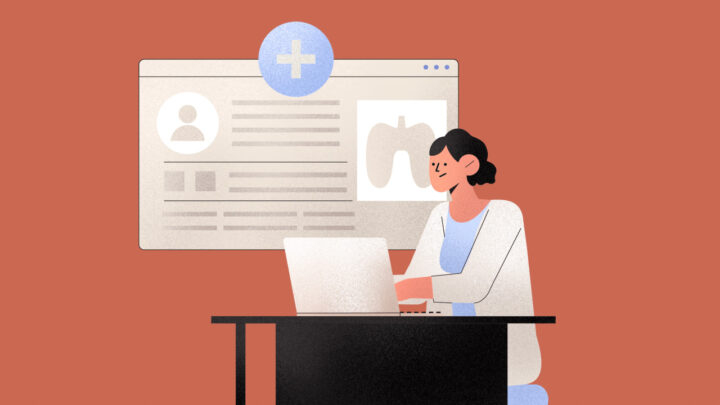
81% of surveyed physicians agree that women in medicine still face adversity, although 78% have seen progress in their roles1, according to members of the Sermo Community. But what are the specific challenges women in healthcare continue to face? And where should our focus lie to ensure further progress?
Female representation in medicine is more important than ever. Women make up nearly half of medical school graduates in many countries2, and they bring essential skills and perspectives to the field.
However, despite significant progress, female physicians continue to encounter systemic challenges that can hinder their careers, well-being, and work-life balance.
In this article, Sermo explores critical insights shared by physicians from the Sermo community and broader research and provides actionable steps to help women in medicine overcome these barriers.
The challenges of being a female physician

Gender discrimination
While progress has been made, gender discrimination remains a persistent issue in medicine. Sermo members point to one notable example is Dr. Lauren Pinter-Brown, who won a $14 million lawsuit against UCLA for gender discrimination after enduring years of unequal treatment3. Stories like hers highlight how deeply ingrained this problem is in healthcare institutions.
According to the 2024 Medscape Physician Compensation Report, male doctors earn about 29% more than their female counterparts4. Despite having similar experience levels, male physicians earn an average of $380,000 annually, while female physicians average $307,0005. This wage gap exists across specialties and regions, signaling the need for broader awareness and advocacy for equal pay.
Female physicians still experience pay inequity despite decades of reforms. Addressing wage gaps requires ongoing transparency in pay structures and firm commitments from healthcare organizations to close the disparity.
Work-life balance struggles
Managing work-life balance is one of the most significant challenges female physicians face, with 78% of women in the Sermo community identifying it as a substantial issue6. Despite working the exact demanding schedules as their male counterparts, women tend to take on the majority of domestic responsibilities. Research shows that up to 80% of housework and childcare duties in dual-physician households fall on women7.
Many female physicians in the Sermo Community report experiencing guilt, resentment, and emotional exhaustion as they try to juggle their professional duties and family obligations. The lack of flexible work schedules and limited maternity leave further exacerbates these challenges6.
Creating more flexible work arrangements and advocating for comprehensive maternity leave policies could relieve some of the pressure on female physicians, allowing them to balance their personal and professional lives more effectively.
Sexism in the workplace
Sexism in medicine is an unfortunate reality that manifests in various ways, from overt sexual harassment to subtle microaggressions. A 2021 report by the British Medical Association found that 91% of female doctors had experienced sexism in the past two years8. This sexism includes:
- Sexual harassment, either physical or verbal
- Microaggressions and stereotyping
- Being challenged or dismissed due to their gender
- Receiving sexist comments and jokes
- Facing negative attitudes about pregnancy and motherhood
Additionally, 74% of female physicians believe that sexism hinders their career advancement, and 61% have felt discouraged from working in certain specialties due to their gender8.
Combating sexism in medicine requires systemic change, including better reporting mechanisms for harassment, active promotion of women into leadership positions, and ongoing education to dismantle gender biases.
Career advancement and opportunities

When it comes to leadership and career advancement, women remain underrepresented. Only 21% of full professors and 16% of deans in academic medicine are women9. Female doctors are also less likely to choose prestigious specialties such as surgery or to aspire to leadership roles within hospitals10.
More needs to be done to encourage female physicians to pursue senior positions, whether through mentorship, leadership programs, or changing the culture around gender expectations in certain specialties.
Inequitable care for women
Not only do female physicians face inequities within their professional roles, but they also report challenges in providing care for female patients due to biased healthcare policies.
A Sermo poll revealed that 52% of physicians view inequitable healthcare as the top challenge in providing quality care for women6. These disparities also affect female physicians’ own access to healthcare, as many report being disbelieved or dismissed when seeking medical attention.
Addressing these issues requires a shift in policy and practice to ensure that female physicians and their patients receive equitable care.
Addressing mental health challenges
Increased suicide rates
Female physicians face mental health challenges at alarming rates. Suicide rates among female physicians are three to four times higher than in the general female population. Medical students are also affected, with 9.4% reporting suicidal thoughts by their fourth year.
The overwhelming pressures of the job, combined with gender-specific challenges, lead to high rates of burnout, with 61% of female physicians identifying burnout and job-related stress as their top mental health concerns6.
To combat the high rates of burnout and mental health challenges among female physicians, there is a clear need for targeted support systems and mental health resources that address both the pressures of the job and the gender-specific challenges they face in the workplace.
Stigma around seeking help
One significant barrier to addressing mental health is the stigma surrounding it. Female physicians are often reluctant to seek help for fear of professional repercussions, such as being perceived as weak or unfit for practice. This stigma further isolates female physicians, making it harder to cope with the emotional demands of their work.
Encouraging open discussions within the medical community is crucial to breaking the stigma around mental health and ensuring female physicians feel safe seeking help.
Fostering support networks and resources for women in medicine

Access to the field
Encouraging more women to enter the medical field is essential for long-term progress. While 76% of Sermo community members believe that more efforts are needed to attract women to medicine1, many female physicians report feeling undervalued because of their gender, with 70% saying their clinical abilities were doubted due to gender bias8.
Actionable steps:
- Improve outreach and mentorship programs aimed at young women interested in healthcare.
- Create scholarships and financial support for female medical students.
- Advocate for more gender-neutral admissions processes in medical schools.
Mentorship and leadership programs
Mentorship is a powerful tool for empowering female physicians, yet only 35% of women in medicine report having access to adequate mentorship programs6.
Female physicians are less likely to have mentors or role models compared to their male colleagues10, further compounding career advancement challenges. Initiatives such as leadership training and career coaching are seen as vital by the Women in Medicine Conference to overcoming the “glass ceiling” that often prevents women from advancing.
Networking, mentorship, and leadership programs are vital to supporting female doctors. Creating peer mentoring opportunities within the Sermo community can help bridge this gap.
Support for work-life balance
Advocating for more flexible work schedules, comprehensive maternity leave, and part-time work options is critical to helping female physicians balance their personal and professional lives. 26% of Sermo members advocate for improved maternity leave policies6, and promoting these ideas can significantly improve retention rates among women in medicine.
Institutions should offer flexibility and support for female physicians, enabling them to thrive in their careers and personal lives.
Resources for addressing discrimination
Access to legal resources and support groups can help female physicians navigate gender discrimination more effectively. Having a strong support network can make a significant difference in a physician’s ability to cope with workplace discrimination and advocate for change.
Takeaway

Female physicians contribute unique and vital voices to healthcare.
However, systemic challenges persist, including pay disparities, sexism, work-life balance struggles, and underrepresentation in leadership.
By fostering mentorship, advocating for flexible work policies, and encouraging open discussions about mental health, the medical community can better support women in medicine.
What can you do today?
Join the Sermo community today to:
- Engage in meaningful discussions
- Share your experiences in a supportive space
- Learn from peers who have gone through the same situations
Whether you’re tackling gender discrimination, managing work-life balance, or addressing mental health challenges, it is important to remember that these struggles don’t have to be faced alone.
By participating, you’ll connect with peers, find actionable solutions, and help create lasting change for women in medicine. Join now
Footnotes
- Sermo
- Al-Busaidi IS, Sharif K, Hassan A. Gender, Geographic, and Socioeconomic Representation in Medical Student Journals: A Cross-Sectional Analysis. Cureus.
- Medscape
- PR Newswire
- Sermo
- Sermo Community. (2024). Survey of Sermo Community Members.
- Healio
- BMA
- AMA
- Buddeberg-Fischer, B., Stamm, M., Buddeberg, C. et al. The impact of gender and parenthood on physicians’ careers – professional and personal situation seven years after graduation. BMC Health Serv Res 10, 40 (2010).














